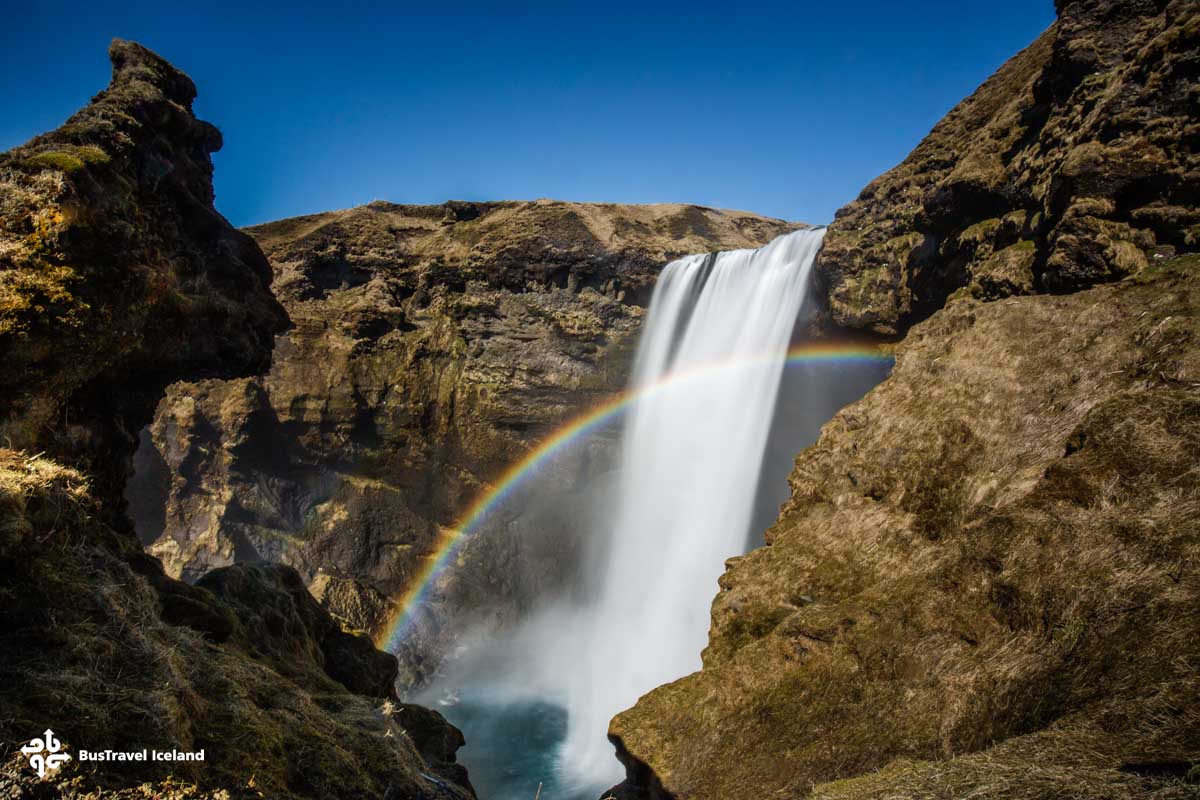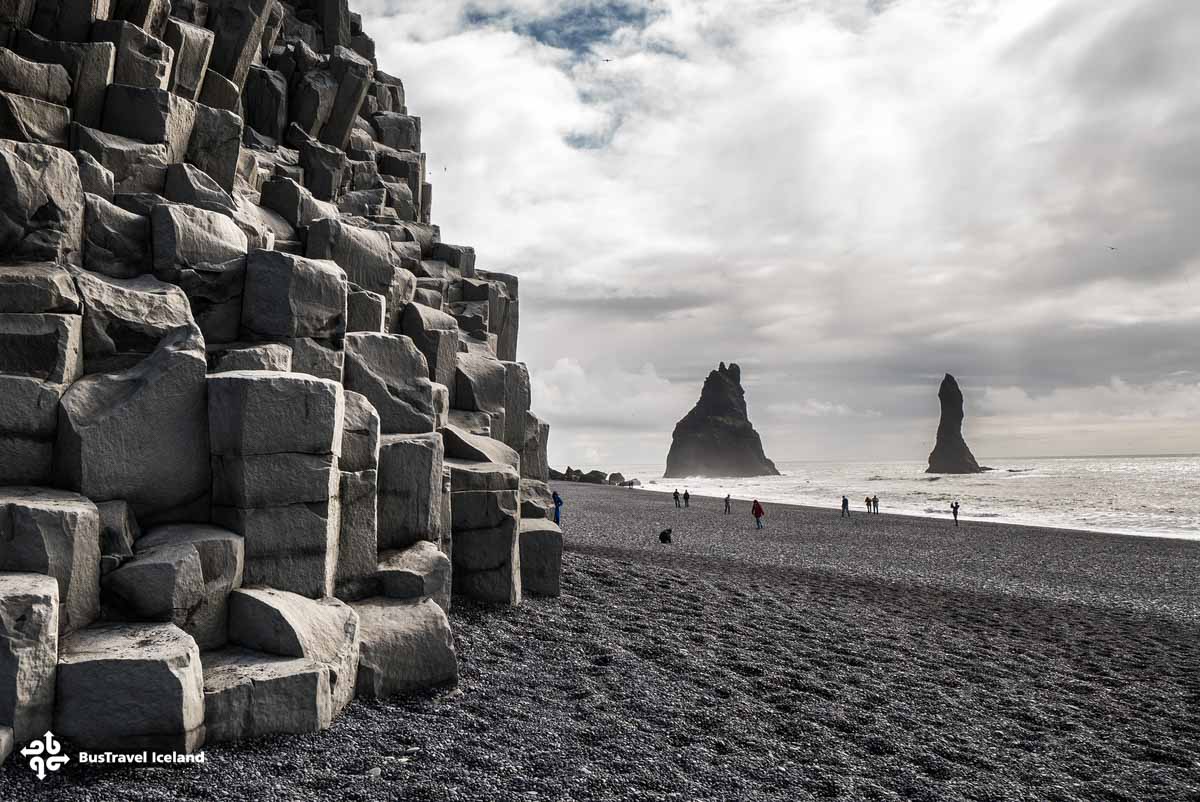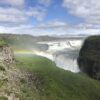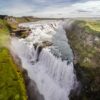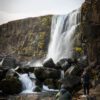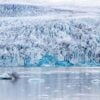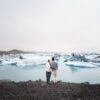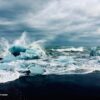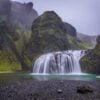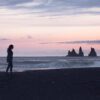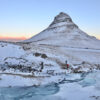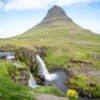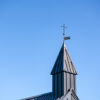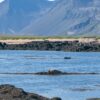4-Day Wonders of Iceland Winter Tour From Reykjavik





Unlock the Magic of 4 Unforgettable Days in Iceland!
Experience our 4-Day Wonders of Iceland Winter Tour From Reykjavik, and dive into an incredible journey that bundles together thrilling sightseeing tours across the famous Golden Circle, the magnificent South Coast of Iceland, the mesmerizing Jokulsarlon Glacier Lagoon and Diamond Beach, and the incredible Snaefellsnes Peninsula, topped with an enchanting Northern Lights hunting adventure guided by our passionate locals.
Plus, with an amazing discounted offer, this is your golden ticket to safely explore the wonders of Iceland in the winter. Witness the iconic Kirkjufell mountain, the awe-inspiring Geysir, the impressive Jökulsárlon, and a treasure trove of unforgettable experiences!
Get ready for an unforgettable 4-day winter adventure in Iceland with our package deal, which includes accommodation. Book now and enjoy a fantastic 12% discount on the full price of these four amazing day tours departing from Reykjavik.
Tours included:
- Tour 1: Grand Golden Circle Tour
- Tour 2: Glacier Lagoon & South Iceland Tour
- Tour 3: Snæfellsnes Peninsula Tour
- Tour 4: Northern Lights Bus Tour (on any day except the same day as the Glacier Lagoon)
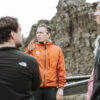
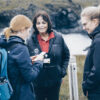

Tour highlights & itinerary
Accommodations on the 4-Day Wonders of Iceland Winter Tour From Reykjavik offer a range of room choices, from single to triple rooms, all equipped with private ensuite bathrooms, complimentary Wi-Fi, and convenient amenities like hairdryers and kettles.
These Icelandic hotel rooms feature a cozy Nordic design and are strategically nestled in natural landscapes, prioritizing comfort and tranquility for a unique experience.
Each morning, savor a diverse continental buffet breakfast with fresh, locally sourced ingredients amidst breathtaking natural scenery.
During your winter journey in Iceland, some hotels provide a Northern Lights wake-up service, ensuring you won’t miss this mesmerizing natural phenomenon. Simply inquire at the front desk of most hotels to enjoy this Icelandic winter highlight!
- 4 popular guided tours at a discounted rate
- 3-night accommondation in central Reykjavik
- Pickup and drop off from designated locations in central Reykjavík
- Free WiFi on board
- Free northern lights retry tour if you don´t see the lights on your first attempt
- Airport Transfers
- Food & Drinks
- Warm, water- and windproof clothing are always a good idea in Iceland.
- All tickets are e-tickets so there is no need to print them out.
- Our free northern lights retry tour promise is valid for 36 months.
- Disclaimer: Tour durations are approximate. Tours can overrun due to weather and other unexpected delays. (Tour 1 - Golden Circle tour takes about 8.5 hours, Tour 2 - Glacier Lagoon & South Iceland tour takes about 14 hours, and Tour 3 - Snaefellsnes Peninsula tour takes about 11 hours. and Tour 4 - Northern Lights bus tour takes about 4 hours.)
- Cancellation Policy for Multi-Day Tours & Packages:
Multi-Day Tours are all scheduled group tours that include accommodation and packages are day tours sold together with accommodation.
All cancellations from customers should be notified via email to info@bustravel.is.- ‣ 100% refund of the tour price, if canceled 7 days or more prior to the starting time of the tour.
- ‣ 50% refund of the tour price, if canceled 7 days or less prior to the starting time of the tour.
- ‣ No refund is given if canceled 48 hours or less prior to the starting time of the tour.
Write a review
Share your experience with others.
Itinerary
Itinerary
 Free timeCentral Reykjavik
Free timeCentral ReykjavikUpon arriving in Reykjavik and settling into my central hotel room, look forward to immersing yourself in the city’s enchanting atmosphere. Before embarking on the Northern Lights hunt, feel free to plan to leisurely explore Reykjavik’s charming streets and alleys, as well as visit the captivating galleries and artistic houses that grace this Nordic capital.
If you want to know more about what to do and what to see in Reykjavik, please read our Reykjavik guide.
#A kind reminder that your free time in Reykjavik is not a part of this tour, your first tour will be the Northern Lights hunt that starts in the evening.
All tours included in this package commence and conclude in Reykjavik. Before each tour, we will conveniently pick you up from our designated meeting point or a specified pickup location. At the conclusion of each tour, we will ensure your return to the same starting point for your convenience.
On the first night of your tour in Reykjavik, you will be accommodated at the central Reykjavik hotel that is part of this package.

1 Day 1 - Northern Lights HuntThe wonderful evening starts with a quick pick-up process in central Reykjavik.
For Aurora hunting the route changes depending on weather conditions and cloud cover. Our experienced guides will take you to places most likely to see the Northern Lights on that evening.

2 Central ReykjavikAt the end of each tour, we return back to Reykjavik. It’s a convenient way to see different parts of Iceland without switching hotels or bringing all the luggage with you.

3 Day 2 - Golden CircleOn day 2, visit the highlights of the famous Golden Circle region, where you will witness the immensely powerful Gullfoss waterfall, boiling water shooting 40 meters in the air at Geysir, National Park Thingvellir on divergent tectonic plates, and a 3000-year-old volcanic crater at Kerið.
The Golden Circle route is marked on the map with a light blue color.

4 Kerið Volcanic Crater LakeOur first captivating stop on the Golden Circle adventure brings us to the remarkable Kerid Crater, a volcanic crater lake that’s nothing short of a visual delight. Here, nature paints a vivid picture with maroon mineral sediments, dark lava rocks, and serene blueish lake water, creating an enchanting scene.
Kerið’s story dates back nearly 6500 years to a momentous eruption that shaped its present form. As the magma chamber emptied, the crater was formed when it dramatically collapsed in on itself. You have the option to stroll along the crater rim or follow the well-paved path down to the crater’s base for an even closer look. In the winter, the lake often transforms into a frozen wonderland, adding another layer of enchantment to this picturesque site

5 Gullfoss WaterfallGullfoss Waterfall, known as the Golden Falls, is an absolute must-see on your Golden Circle tour in Iceland. This remarkable waterfall originates from Langjökull, Iceland’s second-largest glacier. Its majestic cascade begins with an 11-meter (36.01 ft) gentle descent before plunging dramatically into the canyon with a breathtaking 21-meter (68.9 ft) wide drop, creating a mesmerizing mist that dances in the air and forms a colossal rainbow under the sunlight.
Well-maintained pathways offer various viewpoints to marvel at the grandeur of Gullfoss. The upper deck, adjacent to the visitor center, provides a panoramic view of the entire waterfall.
Continuing along the path, you can descend to the lower deck for a different perspective, witnessing the thunderous plunge as it disappears into the earth’s depths. Get even closer to the initial fall from the lower deck, although please note that the path may be closed if icy conditions prevail or if conditions are unfavorable for safety reasons.

6 Geysir Geothermal AreaOur next stop takes us to the captivating Geysir geothermal area, aptly named after the original geyser, the Great Geysir, which is currently dormant. This extraordinary landscape is a tapestry of steam vents, bubbling pits, and simmering ponds, adorned with vibrant patches of color scattered throughout. The star of the show here is the active Strokkur Geyser, which unleashes a powerful jet of water shooting 20 meters into the sky every 5 to 10 minutes. This dazzling and dynamic display is the undisputed highlight of the Geysir geothermal field.
Additionally, the area boasts bubbling hot springs and steamy, muddy fields that contribute to a distinct sulfuric aroma, providing a sensory immersion into Iceland’s natural wonders.
Nearby, a visitor center awaits, offering an array of souvenirs and local products, as well as a variety of dining options to satisfy your appetite and enhance your experience.

7 Thingvellir National ParkThingvellir National Park holds an exceptional place in Icelandic history and geology. Founded in 930 AD, it boasts the world’s oldest active parliament, established by Viking settlers, and continues to be a functioning governing body to this day.
This park is situated directly on the Mid-Atlantic Ridge, a remarkable geological feature that divides the North American and Eurasian tectonic plates. As you traverse the park’s pathways, you’ll find yourself walking within the rift valley between these divergent plates.
Thingvellir National Park offers a wide range of landscapes to explore, including the scenic Öxaráfoss waterfall, the dramatic Almannagjá gorge, the panoramic viewpoint known as Hakið, the stunning Silfra Fissure, and the picturesque Þingvallakirkja Church. The park’s crystal-clear waters are a result of meltwater from Langjökull glacier filtering through an underground lava field, making it one of the world’s best natural filters.
This national treasure is a rich source of knowledge about Iceland’s history, particularly its Viking heritage and the development of its legal system. In recognition of its cultural and natural significance, Þingvellir National Park was designated a UNESCO World Heritage Site in 2004.

8 ReykjavikFollowing our visit to Thingvellir, we’ll make our way back to Reykjavík.
Our drop-off location will be the same as your initial pick-up point earlier in the day.
For the night, you will stay in the included accommodation in central Reykjavik.

9 Day 3 - Jökulsárlón Glacier LagoonYour thrid day is a long one, but so worth the effort!
Visit Seljalandsfoss waterfall as well as your ultimate destination in the Far East, the Diamond Beach, and frozen icebergs at Jökulsárlón glacial lagoon.
The route for this tour is marked with blue color stretching east from Reykjavik.

10 ReykjavikOur day tour kicks off with a swift and convenient pick-up service. We’ll gather you from the city center’s hotels or one of the specified pick-up locations in Reykjavik. Once everyone is aboard, our thrilling adventure begins.
As we journey through Route 1 towards South Iceland, you’ll be treated to breathtaking views on all sides: majestic glaciers crowned in silver, expansive black sand plains, enchanting moss-covered lava fields, and the sparkling Atlantic Ocean in the distance. The South Coast of Iceland boasts a wealth of dramatic landscapes waiting to be explored.

11 Fjallsárlón Glacier LagoonBefore arriving at Jokulsarlon, our journey includes a stop at Fjallsárlón Glacier Lagoon, a hidden gem within Vatnajökull National Park. This lesser-known destination offers breathtaking vistas of the Fjallsarlon Glacier Lagoon and the glacier tongue of Vatnajokull.
While Fjallsárlón may not have the same fame as Jökulsárlón Glacier Lagoon, it holds a special place in the hearts of locals and outdoor enthusiasts. Here, visitors have the opportunity to kayak or embark on a zodiac boat ride on the tranquil lake, getting up close to the icebergs and the outlet glacier. The rugged, crevassed glacier ice creates a truly unforgettable icy landscape.

12 Jökulsárlón Glacier LagoonOur journey takes us approximately 380 km (236.12 miles) from Reykjavik to reach our first destination, the magnificent Jokulsarlon Glacier Lagoon, often referred to as Iceland’s crown jewel. Situated near the Vatnajokull National Park, Jokulsarlon is renowned for its captivating beauty and ever-changing scenery. It has also served as the backdrop for several iconic films, including James Bond movies like “Die Another Day” and “A View to a Kill,” as well as “Lara Croft: Tomb Raider,” “Batman Begins,” and “The Northman.”
This breathtaking lagoon was formed by the Breiðarmerkurjökull glacial tongue, one of the outlet glaciers stemming from Iceland’s largest ice cap, Vatnajokull. In the 1970s, as the glacier retreated, it left behind a vast pond near the coast, eventually becoming Iceland’s deepest lake.
One of the most remarkable features of the glacier lagoon is the floating icebergs, displaying a mesmerizing array of blues and, in some cases, brownish stripes, resulting from ash sediment deposited by volcanic eruptions decades ago. These icebergs, calved from the glacier, drift gracefully around the lagoon, continuously changing in color, shape, and appearance. Over time, they break into smaller pieces and make their way to the sea, creating a captivating spectacle.
Summer is an ideal time to explore the lagoon, offering the opportunity to take an optional boat ride among the icebergs, providing an up-close and unforgettable experience. Jokulsarlon is also home to vibrant wildlife, with Arctic terns nesting nearby, seals gracefully swimming in the waters or resting on icebergs, and a chance to immerse yourself in the pristine beauty of Iceland’s nature.

13 Diamond BeachThe icebergs that break away from the glacier tongue eventually make their way into the lagoon before being carried ashore. Here at the Diamond Beach, you’ll encounter icebergs of varying sizes, some still massive and radiant blue, while others are small and crystalline. They create a captivating contrast against the backdrop of the black sand beach, making it a truly unique and visually stunning experience.
Walking along the beach, breathing in the fresh sea air, you’ll find a sense of tranquility, perhaps even punctuated by the playful antics of seals frolicking in the surf.
Following your visit to the lagoon and beach, we’ll begin our journey back to the capital city along the scenic south coast. Along the way, we’ll make stops at several iconic attractions that promise to be unforgettable.

14 Stjórnarfoss waterfallThe surprises along our journey continue as we explore more of Iceland’s captivating South Coast. We’ll make a delightful detour to visit an enchanting yet lesser-known natural wonder, Stjórnarfoss waterfall. This hidden gem is highly recommended for those on a Ring Road trip itinerary, and we’re excited to introduce you to this off-the-beaten-path treasure.
Stjórnarfoss waterfall flows in two picturesque stages, each about 15 meters (49.21 ft) in height. The lower drop gracefully cascades over a dome-shaped rock, creating a symmetrical and visually pleasing spectacle. This photogenic waterfall has been a magnet for photographers due to its unique appearance. Emerging from the Stjórn River, which originates from Mount Geirlandshraun, Stjórnarfoss meanders through a scenic valley, enveloping you in a mysterious and captivating atmosphere.

15 Vík Village and Reynisdrangar Sea StacksVík í Mýrdal, a picturesque seaside village, may be small with only 300 residents, but it boasts an array of extraordinary natural wonders as Iceland’s southernmost village. Here, you’ll find several stores and gift shops offering a variety of options for visitors to rejuvenate and shop for souvenirs.
During the summer months, Vík comes alive with vibrant colors. Its black sand beach is a highly acclaimed destination, known for its diverse landscapes and beautifully sculpted sea stacks. These sights are sure to ignite your imagination, with the powerful tides crashing and creating an ethereal, misty world around you.
While in Vík, be sure to capture a photograph of the magnificent Reynisdrangur sea stack in the distance, a moment you won’t want to miss.

16 Seljalandsfoss waterfallSeljalandsfoss waterfall is one of Iceland’s most renowned and beloved natural attractions. Fed by the glacial meltwater of the famous and sometimes notorious glacier volcano Eyjafjallajökull, this waterfall cascades from a height of 60 meters (196.85 feet). Seljalandsfoss offers a unique surprise for visitors.
Under the right conditions, you have the opportunity to walk behind the waterfall and witness the entire area from behind the falling curtain of water. This experience provides a spectacular panoramic view that adds to the magic of Seljalandsfoss.

17 ReykjavikFollowing the visit to the waterfall, we’ll return to our bus and commence our journey back to Reykjavik via Route 1. The drive typically takes around two hours, allowing you to relax and enjoy the scenic views as we head back to the capital.
On the third night of your tour in Reykjavik, you will be accommodated at a central Reykjavik hotel that is part of this package.

18 Day 4 - Snæfellsnes PeninsulaYour 4th adventure is a change of pace as we explore Snæfellsnes Peninsula in west Iceland. A place of myth and legend and inspiration to cultural tastemakers both old and new, see the iconic Mt. Kirkjufell as well as the idyllic fishing village and bird cliffs at Arnarstapi.
You will also visit Djúpalónssandur black pebble beach, see Lóndrangar rock pinnacles, and try to spot seals at Ytri-Tunga Beach.
This day’s route is marked with a dark blue color on the map, north-west from Reykjavik.

19 ReykjavikYour adventure to the Snæfellsnes Peninsula from Reykjavík kicks off with our convenient morning pickup service. We offer pickups at numerous locations in the city center, making it easy for you to join the tour. Alternatively, you can choose to meet us at our centrally located meeting point, which can save you some money. Once our entire group is assembled, we bid farewell to the city and embark on our journey north along the iconic Route 1 before veering westward toward the captivating Snæfellsnes Peninsula. This is where your exciting adventure truly begins!

20 Berserkjahraun lava fieldsSnæfellsnes is a region teeming with volcanic activity, and at its heart lies the imposing Snæfellsnesjökull glacier, crowning a stratovolcano. But that’s just the beginning; the peninsula is peppered with numerous other volcanoes. A remarkable example of volcanic history in the area is the eruption that occurred 4000 years ago, giving birth to the mesmerizing Berserkjahraun lava fields, our first destination of the day. These lava fields are not just ordinary; they are adorned with a lush cover of moss, creating a surreal landscape. Additionally, this volcanic event sculpted the distinctive scoria volcanic craters known as Rauðkúla and Grákúla.
Interestingly, the intriguing name of this place traces its roots back to the Eyrbyggja Saga, a historical account that narrates the story of two fierce Swedish berserkers, Viking warriors known for their incredible strength and ferocity. According to the saga, these warriors helped an Icelandic farmer clear a path through the challenging lava fields. However, their assistance eventually led to betrayal and murder. Folktales like these often emerge to explain the peculiar geological features found in the Icelandic landscape.

21 Mt. Kirkjufell & Kirkjufellsfoss waterfallMount Kirkjufell stands as one of Iceland’s most iconic and frequently photographed mountains, closely intertwined with the identity of its surrounding area. Located just a short distance from Grundarfjörður, this mountain exhibits a distinctive arrowhead-like shape and rises to an elevation of 463 meters. Despite its relatively modest height, Kirkjufell appears imposing as it seemingly pierces through the otherwise flat landscape that envelops it. The name “Kirkjufell” translates to “church mountain” in Icelandic, though the exact origin of this name remains a mystery.
Kirkjufell’s allure as Iceland’s most photographed mountain is well-earned, with its classic shot featuring the distant peak framed by the cascading Kirkjufellsfoss waterfall and the mirror image of the mountain reflected in the adjacent lake. A meticulously maintained path leading to the waterfall offers the perfect vantage point to capture this iconic shot.
In the popular television series Game of Thrones, a snow-covered Kirkjufell made an appearance in a season 7 episode. In this episode, the character Jon Snow embarks on a journey beyond the wall, seeking evidence to substantiate the existence of wights.

22 Snæfellsjökull National ParkSnæfellsjökull National Park is a protected natural haven centered around the magnificent Snæfellsjökull glacier and volcano. Situated at the westernmost point of the Snæfellsnes Peninsula, the glacier’s snow-capped peak can be glimpsed from Reykjavík across Faxaflóa Bay on a clear day.
Notably, the imaginative world of the legendary French science fiction author Jules Verne intersects with this captivating landscape. In his seminal novel, “Journey to the Center of the Earth,” the story’s protagonists embark on an extraordinary adventure. They rappel down into the dormant volcano at Snæfellsjökull, delving deep into the earth’s bowels, where they encounter great peril and unearth remarkable creatures.
Our upcoming stops on this tour are also nestled within the boundaries of this national park, promising more natural wonders and awe-inspiring experiences.

23 Djúpalónssandur Black Sand BeachOur journey through Snæfellsjökull National Park continues with a visit to Djúpalónssandur black pebble beach, a captivating black sand beach with a tumultuous geological history. The striking black hue of the sand is a result of ancient volcanic activity when molten lava flowed into the sea. Over time, the relentless power of the ocean eroded the volcanic material, leaving behind the striking black sands that grace this beach today. Adding to its allure, the shoreline is framed by intriguing lava formations.
For centuries, this coastline has been frequented by both local fishermen and foreign trawlers. The nearby abandoned fishing village of Dritvík was once a bustling regional hub. Here, local fishermen would test their strength by attempting to lift stones of varying weights. To secure a coveted spot on a fishing boat, a prospective fisherman had to demonstrate his prowess by lifting a 54kg stone. Additional stones, each with its own name and weight, provided further challenges: Amlóði (Useless) at 23kg, Hálfsterkur (half strength) at 100kg, and Fullsterkur (full strength) at 154kg.
A somber reminder of the perils faced by those who ventured to sea, the wreck of the Epine GY7, a fishing boat that sank in 1948 claiming the lives of 14 men in stormy waters, still rests on the beach. This poignant sight serves as a stark tribute to this tragic event and others, highlighting the profound connection between the sea and life and death in Iceland

24 Lóndrangar PinnaclesContinuing our exploration of the southern side of the Snæfellsnes Peninsula, our next stop brings us to the striking Lóndrangar pinnacles. These magnificent geological formations are volcanic plugs made of basalt that rise dramatically from the turbulent sea. Sculpted by centuries of relentless waves and erosion, these two towering peaks stand at impressive heights of 75 and 61 meters above the surrounding landscape.
The Lóndrangar pinnacles offer a captivating natural spectacle, and a well-maintained walking path allows you to explore the area and appreciate these unique formations from various viewpoints. As you venture along the path, you’ll have the opportunity to admire the pinnacles from different angles, each revealing their awe-inspiring grandeur. The crashing waves, dramatic cliffs, and towering pinnacles create a breathtaking scene that captures the raw beauty of Iceland’s natural wonders.

25 Arnarstapi cliffs & sea-bridgeOur journey continues to the picturesque village of Arnarstapi, a charming coastal hamlet nestled amidst stunning mountain vistas and captivating coastline views. Once a thriving fishing center, Arnarstapi’s fishing industry has slowed over the years, making way for tourism to become a vital source of livelihood for the resilient local community.
As we explore Arnarstapi, you’ll be immersed in the vibrant birdlife that populates the cliffs, serving as an essential nesting site. Viewing platforms are strategically placed to offer photographers fantastic vantage points for capturing the diverse bird species that call this area home.
Arnarstapi is also renowned for its striking basalt columns and intriguing rock formations, which have been shaped by years of relentless erosion as the land battles against the encroaching sea. One particularly popular attraction is the stone bridge, formed by the sea’s gradual erosion of the cliff into a stunning stone arch. While it may appear precarious in photographs, rest assured that it is entirely safe to walk beneath this natural wonder, allowing you to marvel at its unique beauty up close. Arnarstapi provides a perfect blend of nature’s wonders and the cultural heritage of a resilient coastal community.

26 Búðir Black ChurchStanding proudly against the remote and desolate Icelandic landscape, the Budir black church, locally known as Búðakirkja, is one of the most renowned and photographed landmarks in Iceland. This historic church, originally constructed in 1848, has witnessed restoration efforts in the 1950s and again in the 1980s, ensuring its continued presence as a captivating piece of Icelandic heritage.
Budir’s black church is a striking architectural gem, characterized by its stark black exterior, which forms a captivating contrast with the surrounding natural environment. The church’s dramatic appearance has made it a sought-after subject for photographers, appealing to both professionals and amateur enthusiasts alike. Its remote location adds to its allure, creating a unique atmosphere that beckons visitors to capture its timeless beauty in photographs. Budir black church stands as a testament to Iceland’s rich cultural and historical heritage, harmoniously blending with the captivating landscapes that define this remarkable island nation.

27 Ytri Tunga beachOur journey concludes with a visit to the enchanting Ytri Tunga Beach, a hidden gem often overshadowed by Iceland’s iconic black sand beaches. However, Ytri Tunga Beach holds a delightful secret that sets it apart – it is one of the most exceptional places in all of Iceland for spotting seals. As you explore this picturesque golden sand beach, keep your eyes peeled for seals basking on the rocks just offshore. The beach’s unique appeal lies in the frequent presence of a seal colony, where these graceful creatures can often be seen resting and playing amidst the breathtaking coastal scenery. Ytri Tunga Beach offers an opportunity to witness Iceland’s diverse and captivating wildlife, providing a memorable and heartwarming experience for all who visit.
 Rekjavik
RekjavikOur return journey will take us back to Reykjavík, where we will bid you farewell after this incredible tour filled with hidden gems and unforgettable experiences. As we travel back to the capital, you’ll have the opportunity to reflect on the natural wonders, stunning landscapes, and wildlife encounters you’ve enjoyed throughout the day. We hope this tour has left you with cherished memories and a deeper appreciation for the beauty of Iceland’s landscapes and wildlife.































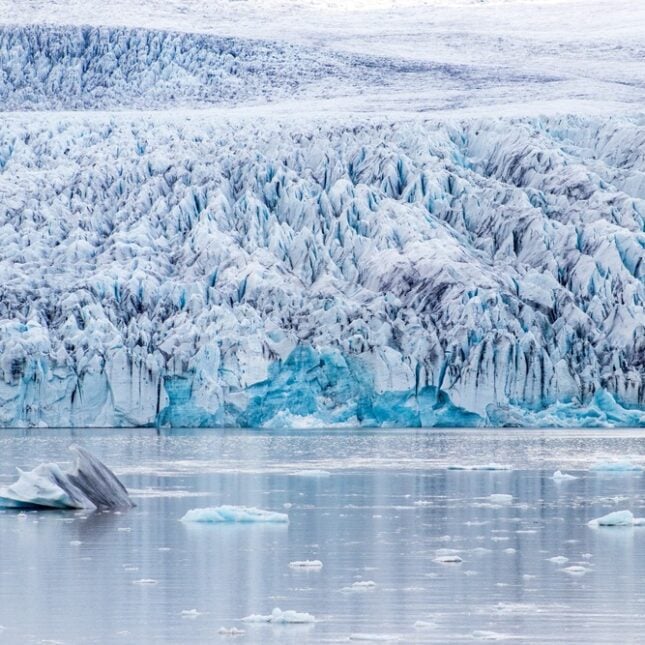
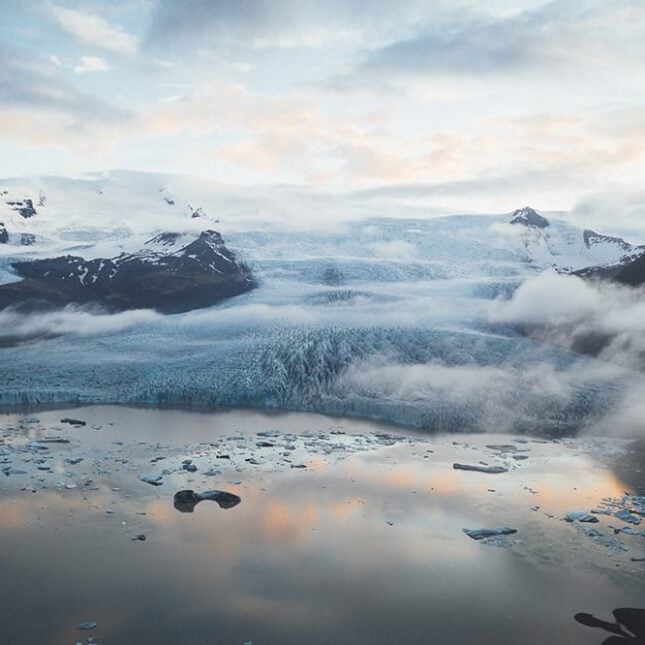

















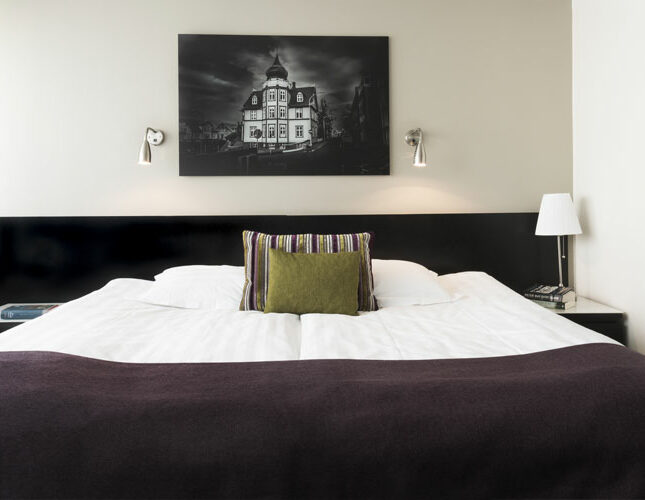

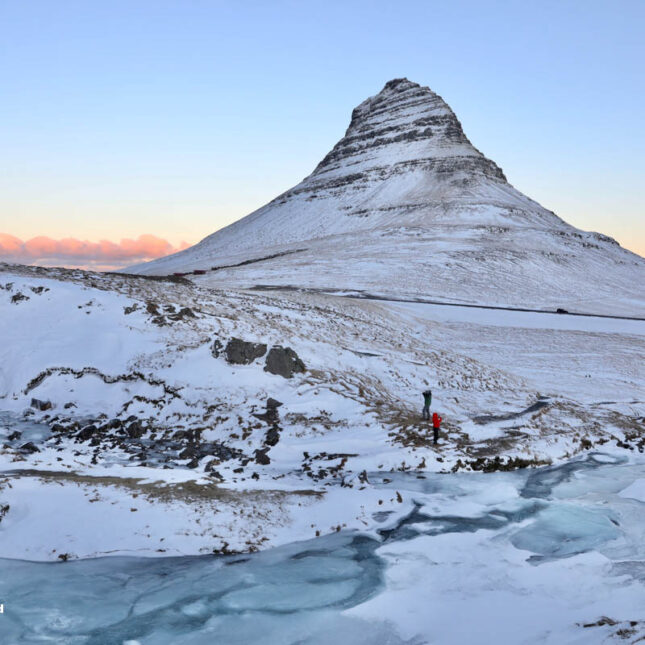
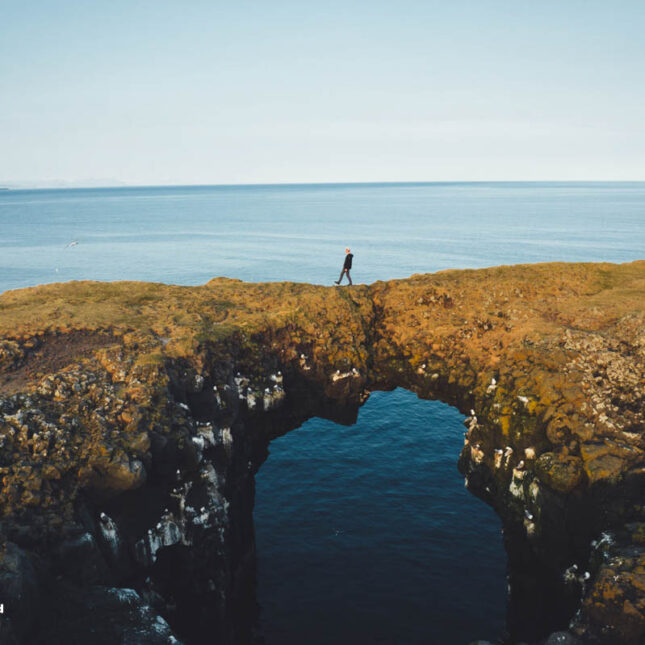






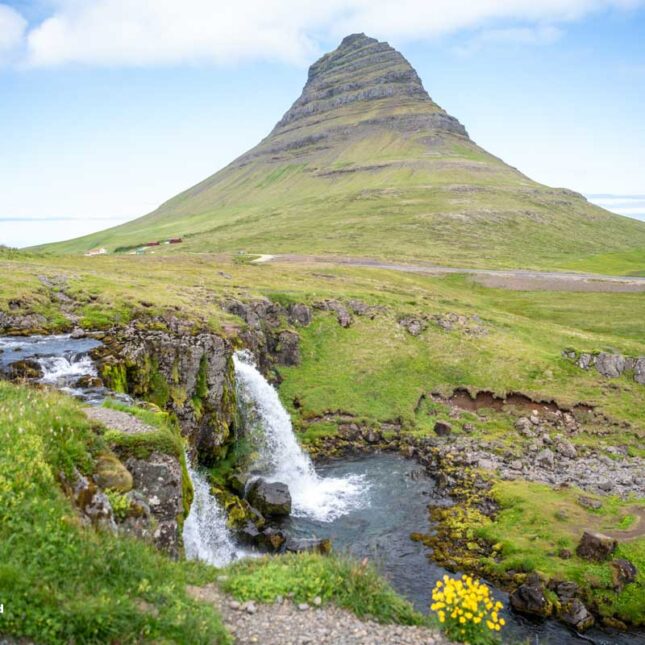
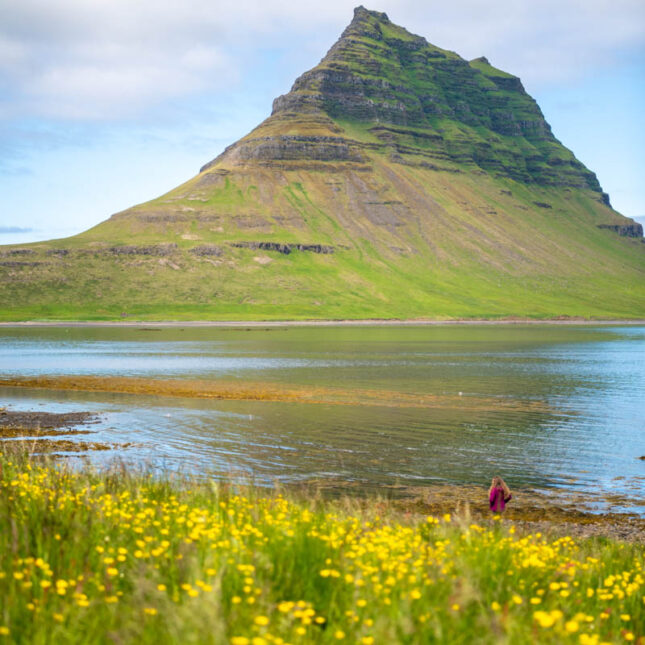











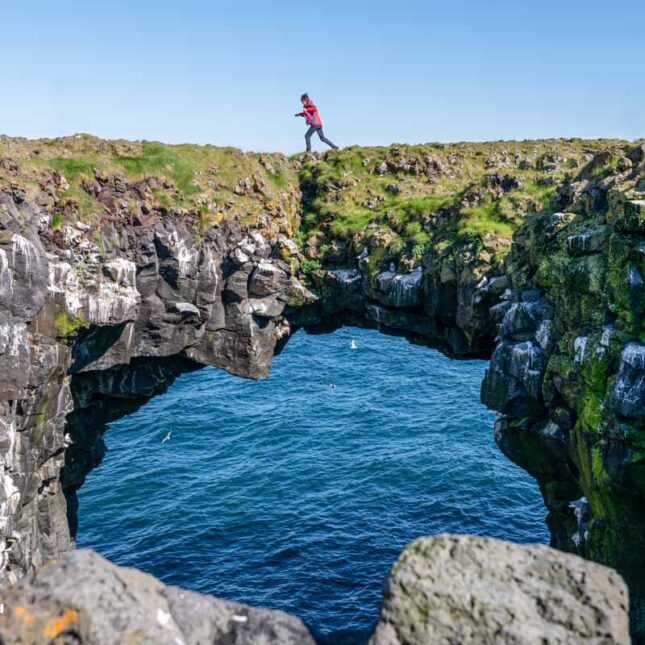

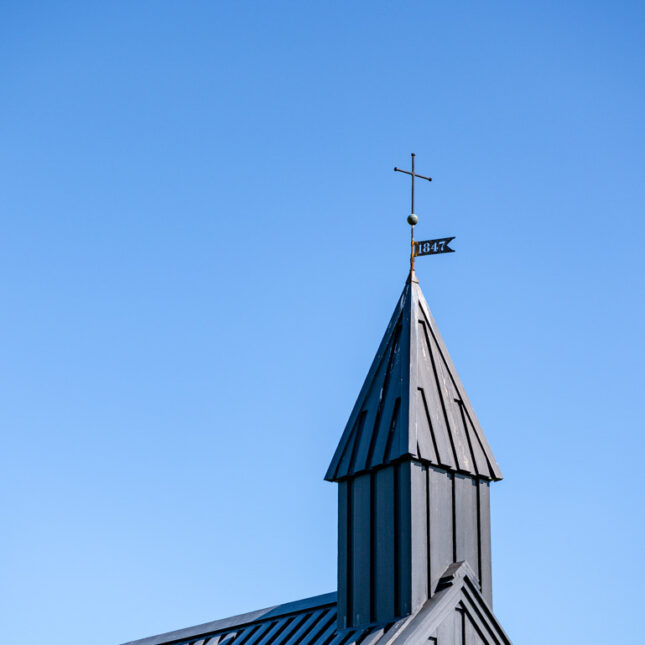
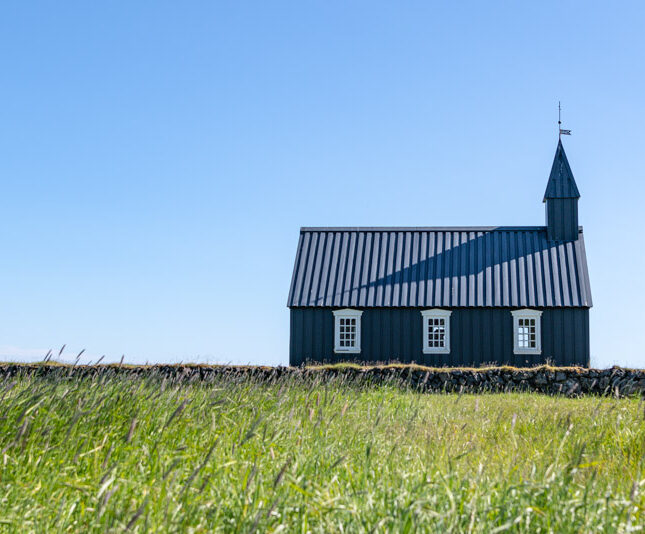


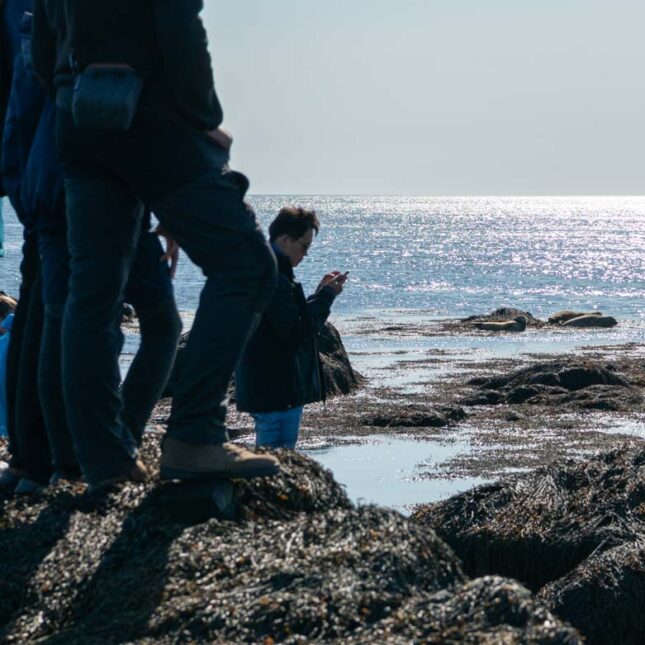



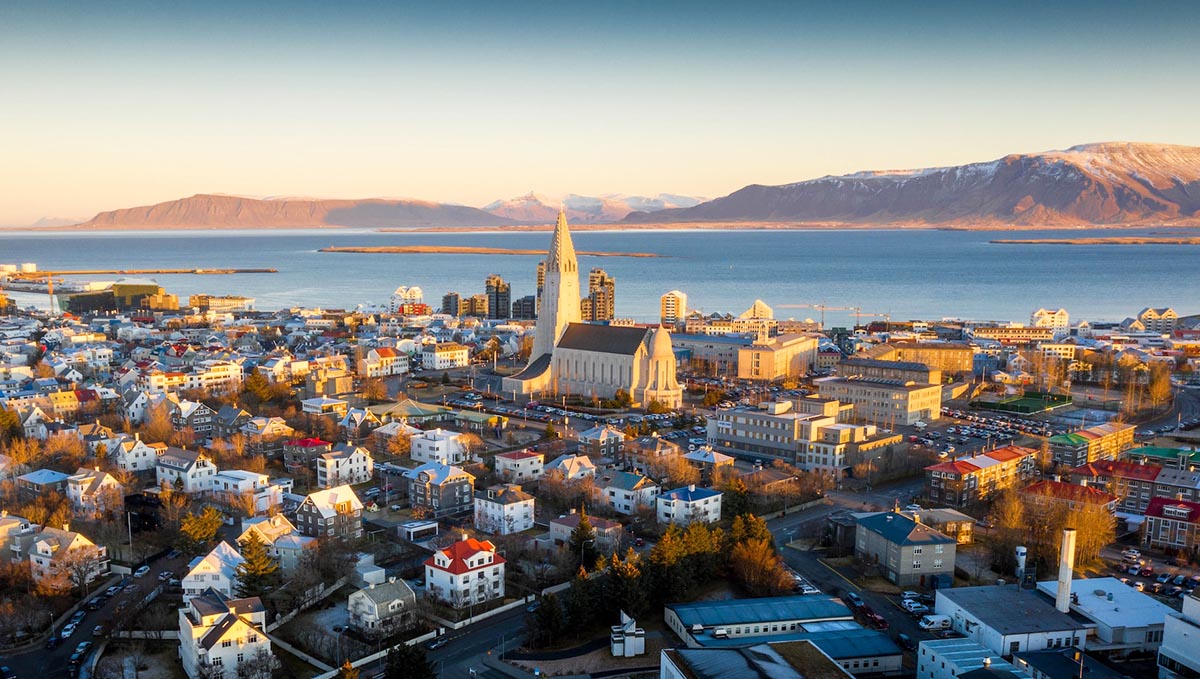
Upon arriving in Reykjavik and settling into my central hotel room, look forward to immersing yourself in the city’s enchanting atmosphere. Before embarking on the Northern Lights hunt, feel free to plan to leisurely explore Reykjavik’s charming streets and alleys, as well as visit the captivating galleries and artistic houses that grace this Nordic capital.
If you want to know more about what to do and what to see in Reykjavik, please read our Reykjavik guide.
#A kind reminder that your free time in Reykjavik is not a part of this tour, your first tour will be the Northern Lights hunt that starts in the evening.
All tours included in this package commence and conclude in Reykjavik. Before each tour, we will conveniently pick you up from our designated meeting point or a specified pickup location. At the conclusion of each tour, we will ensure your return to the same starting point for your convenience.
On the first night of your tour in Reykjavik, you will be accommodated at the central Reykjavik hotel that is part of this package.

The wonderful evening starts with a quick pick-up process in central Reykjavik.
For Aurora hunting the route changes depending on weather conditions and cloud cover. Our experienced guides will take you to places most likely to see the Northern Lights on that evening.

At the end of each tour, we return back to Reykjavik. It’s a convenient way to see different parts of Iceland without switching hotels or bringing all the luggage with you.
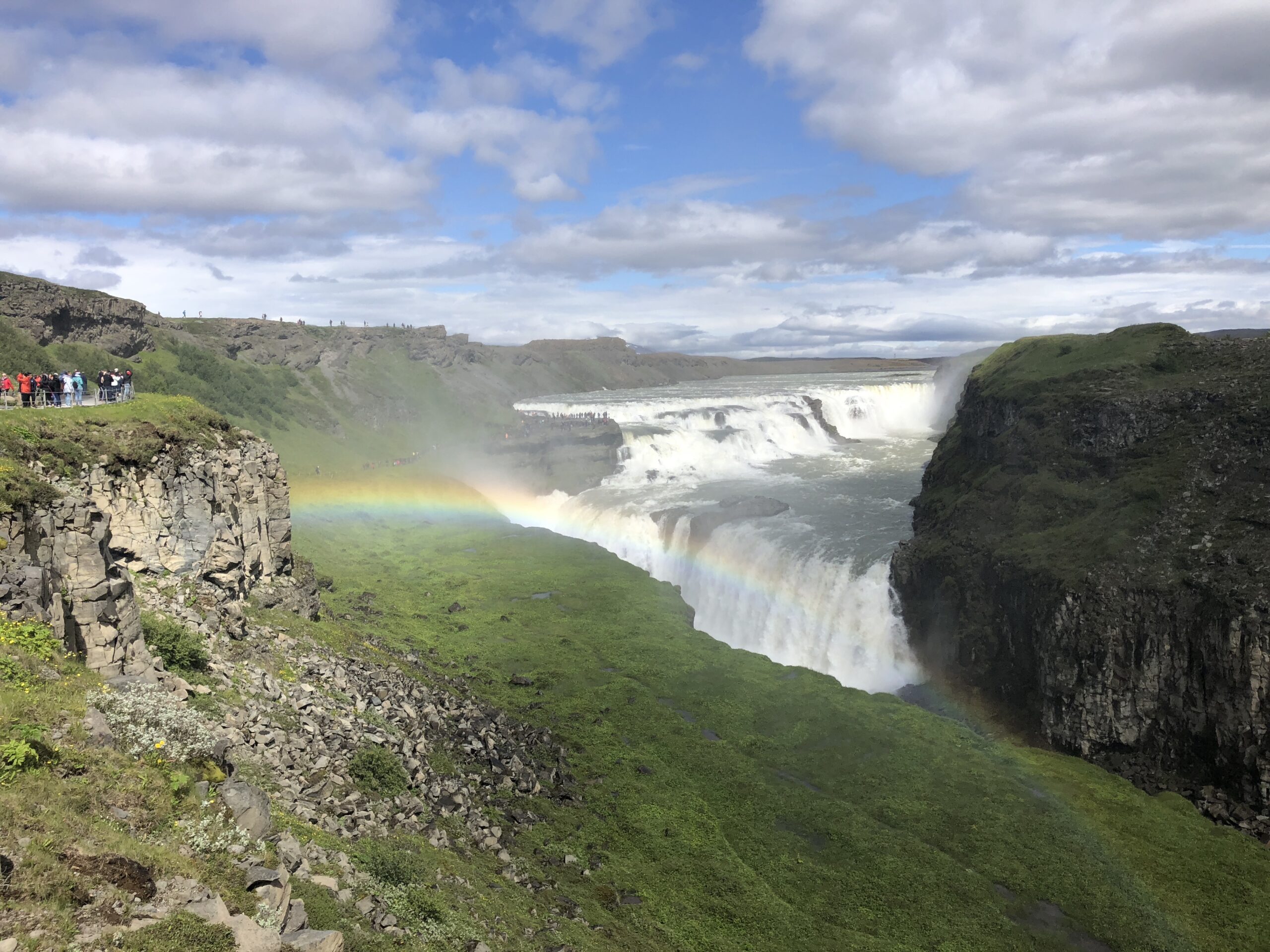
On day 2, visit the highlights of the famous Golden Circle region, where you will witness the immensely powerful Gullfoss waterfall, boiling water shooting 40 meters in the air at Geysir, National Park Thingvellir on divergent tectonic plates, and a 3000-year-old volcanic crater at Kerið.
The Golden Circle route is marked on the map with a light blue color.

Our first captivating stop on the Golden Circle adventure brings us to the remarkable Kerid Crater, a volcanic crater lake that’s nothing short of a visual delight. Here, nature paints a vivid picture with maroon mineral sediments, dark lava rocks, and serene blueish lake water, creating an enchanting scene.
Kerið’s story dates back nearly 6500 years to a momentous eruption that shaped its present form. As the magma chamber emptied, the crater was formed when it dramatically collapsed in on itself. You have the option to stroll along the crater rim or follow the well-paved path down to the crater’s base for an even closer look. In the winter, the lake often transforms into a frozen wonderland, adding another layer of enchantment to this picturesque site

Gullfoss Waterfall, known as the Golden Falls, is an absolute must-see on your Golden Circle tour in Iceland. This remarkable waterfall originates from Langjökull, Iceland’s second-largest glacier. Its majestic cascade begins with an 11-meter (36.01 ft) gentle descent before plunging dramatically into the canyon with a breathtaking 21-meter (68.9 ft) wide drop, creating a mesmerizing mist that dances in the air and forms a colossal rainbow under the sunlight.
Well-maintained pathways offer various viewpoints to marvel at the grandeur of Gullfoss. The upper deck, adjacent to the visitor center, provides a panoramic view of the entire waterfall.
Continuing along the path, you can descend to the lower deck for a different perspective, witnessing the thunderous plunge as it disappears into the earth’s depths. Get even closer to the initial fall from the lower deck, although please note that the path may be closed if icy conditions prevail or if conditions are unfavorable for safety reasons.

Our next stop takes us to the captivating Geysir geothermal area, aptly named after the original geyser, the Great Geysir, which is currently dormant. This extraordinary landscape is a tapestry of steam vents, bubbling pits, and simmering ponds, adorned with vibrant patches of color scattered throughout. The star of the show here is the active Strokkur Geyser, which unleashes a powerful jet of water shooting 20 meters into the sky every 5 to 10 minutes. This dazzling and dynamic display is the undisputed highlight of the Geysir geothermal field.
Additionally, the area boasts bubbling hot springs and steamy, muddy fields that contribute to a distinct sulfuric aroma, providing a sensory immersion into Iceland’s natural wonders.
Nearby, a visitor center awaits, offering an array of souvenirs and local products, as well as a variety of dining options to satisfy your appetite and enhance your experience.

Thingvellir National Park holds an exceptional place in Icelandic history and geology. Founded in 930 AD, it boasts the world’s oldest active parliament, established by Viking settlers, and continues to be a functioning governing body to this day.
This park is situated directly on the Mid-Atlantic Ridge, a remarkable geological feature that divides the North American and Eurasian tectonic plates. As you traverse the park’s pathways, you’ll find yourself walking within the rift valley between these divergent plates.
Thingvellir National Park offers a wide range of landscapes to explore, including the scenic Öxaráfoss waterfall, the dramatic Almannagjá gorge, the panoramic viewpoint known as Hakið, the stunning Silfra Fissure, and the picturesque Þingvallakirkja Church. The park’s crystal-clear waters are a result of meltwater from Langjökull glacier filtering through an underground lava field, making it one of the world’s best natural filters.
This national treasure is a rich source of knowledge about Iceland’s history, particularly its Viking heritage and the development of its legal system. In recognition of its cultural and natural significance, Þingvellir National Park was designated a UNESCO World Heritage Site in 2004.

Following our visit to Thingvellir, we’ll make our way back to Reykjavík.
Our drop-off location will be the same as your initial pick-up point earlier in the day.
For the night, you will stay in the included accommodation in central Reykjavik.

Your thrid day is a long one, but so worth the effort!
Visit Seljalandsfoss waterfall as well as your ultimate destination in the Far East, the Diamond Beach, and frozen icebergs at Jökulsárlón glacial lagoon.
The route for this tour is marked with blue color stretching east from Reykjavik.

Our day tour kicks off with a swift and convenient pick-up service. We’ll gather you from the city center’s hotels or one of the specified pick-up locations in Reykjavik. Once everyone is aboard, our thrilling adventure begins.
As we journey through Route 1 towards South Iceland, you’ll be treated to breathtaking views on all sides: majestic glaciers crowned in silver, expansive black sand plains, enchanting moss-covered lava fields, and the sparkling Atlantic Ocean in the distance. The South Coast of Iceland boasts a wealth of dramatic landscapes waiting to be explored.
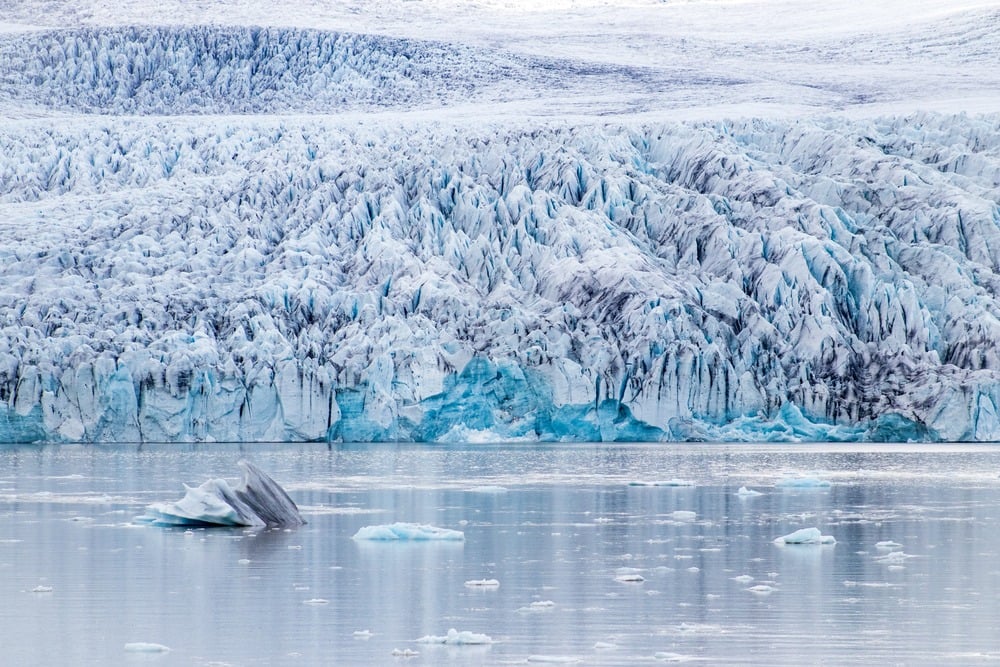
Before arriving at Jokulsarlon, our journey includes a stop at Fjallsárlón Glacier Lagoon, a hidden gem within Vatnajökull National Park. This lesser-known destination offers breathtaking vistas of the Fjallsarlon Glacier Lagoon and the glacier tongue of Vatnajokull.
While Fjallsárlón may not have the same fame as Jökulsárlón Glacier Lagoon, it holds a special place in the hearts of locals and outdoor enthusiasts. Here, visitors have the opportunity to kayak or embark on a zodiac boat ride on the tranquil lake, getting up close to the icebergs and the outlet glacier. The rugged, crevassed glacier ice creates a truly unforgettable icy landscape.
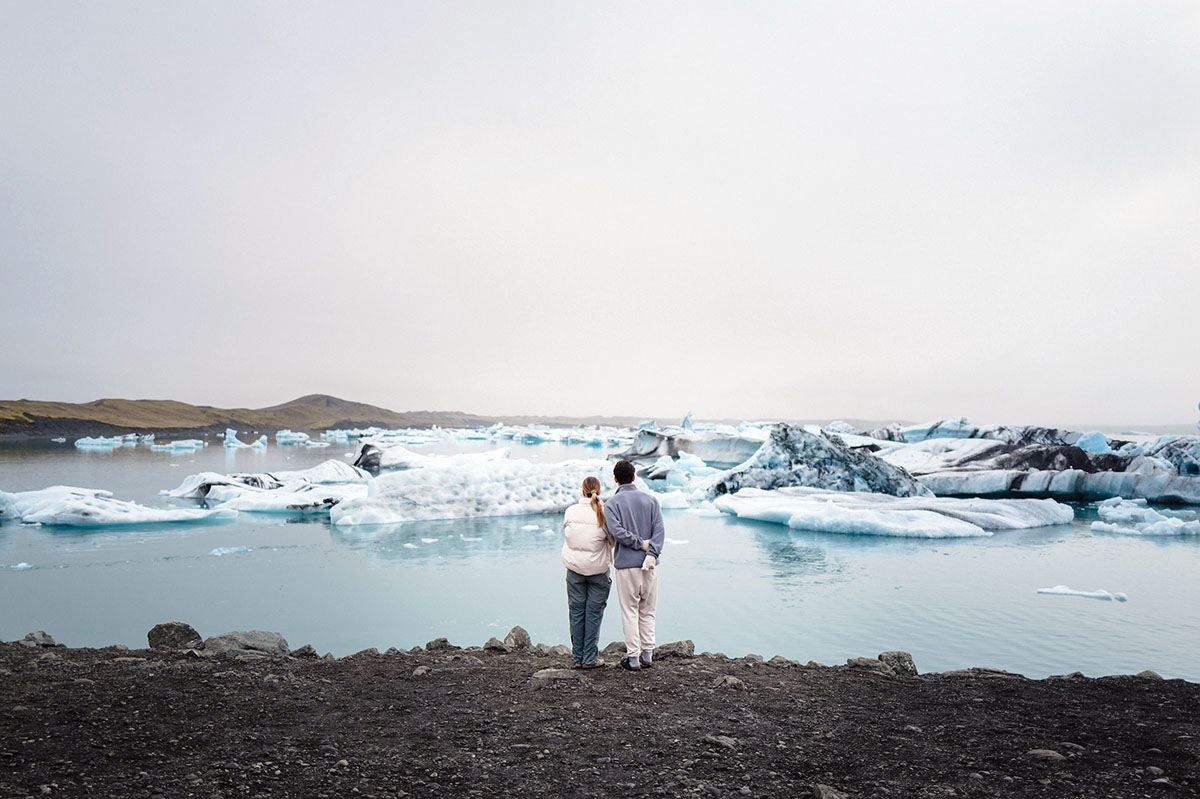
Our journey takes us approximately 380 km (236.12 miles) from Reykjavik to reach our first destination, the magnificent Jokulsarlon Glacier Lagoon, often referred to as Iceland’s crown jewel. Situated near the Vatnajokull National Park, Jokulsarlon is renowned for its captivating beauty and ever-changing scenery. It has also served as the backdrop for several iconic films, including James Bond movies like “Die Another Day” and “A View to a Kill,” as well as “Lara Croft: Tomb Raider,” “Batman Begins,” and “The Northman.”
This breathtaking lagoon was formed by the Breiðarmerkurjökull glacial tongue, one of the outlet glaciers stemming from Iceland’s largest ice cap, Vatnajokull. In the 1970s, as the glacier retreated, it left behind a vast pond near the coast, eventually becoming Iceland’s deepest lake.
One of the most remarkable features of the glacier lagoon is the floating icebergs, displaying a mesmerizing array of blues and, in some cases, brownish stripes, resulting from ash sediment deposited by volcanic eruptions decades ago. These icebergs, calved from the glacier, drift gracefully around the lagoon, continuously changing in color, shape, and appearance. Over time, they break into smaller pieces and make their way to the sea, creating a captivating spectacle.
Summer is an ideal time to explore the lagoon, offering the opportunity to take an optional boat ride among the icebergs, providing an up-close and unforgettable experience. Jokulsarlon is also home to vibrant wildlife, with Arctic terns nesting nearby, seals gracefully swimming in the waters or resting on icebergs, and a chance to immerse yourself in the pristine beauty of Iceland’s nature.

The icebergs that break away from the glacier tongue eventually make their way into the lagoon before being carried ashore. Here at the Diamond Beach, you’ll encounter icebergs of varying sizes, some still massive and radiant blue, while others are small and crystalline. They create a captivating contrast against the backdrop of the black sand beach, making it a truly unique and visually stunning experience.
Walking along the beach, breathing in the fresh sea air, you’ll find a sense of tranquility, perhaps even punctuated by the playful antics of seals frolicking in the surf.
Following your visit to the lagoon and beach, we’ll begin our journey back to the capital city along the scenic south coast. Along the way, we’ll make stops at several iconic attractions that promise to be unforgettable.
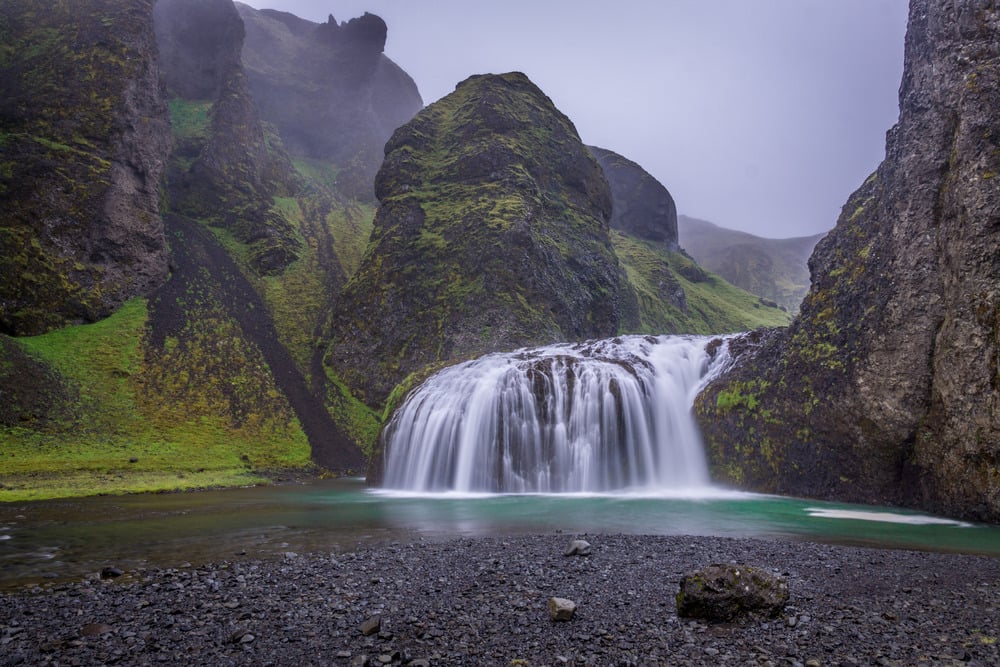
The surprises along our journey continue as we explore more of Iceland’s captivating South Coast. We’ll make a delightful detour to visit an enchanting yet lesser-known natural wonder, Stjórnarfoss waterfall. This hidden gem is highly recommended for those on a Ring Road trip itinerary, and we’re excited to introduce you to this off-the-beaten-path treasure.
Stjórnarfoss waterfall flows in two picturesque stages, each about 15 meters (49.21 ft) in height. The lower drop gracefully cascades over a dome-shaped rock, creating a symmetrical and visually pleasing spectacle. This photogenic waterfall has been a magnet for photographers due to its unique appearance. Emerging from the Stjórn River, which originates from Mount Geirlandshraun, Stjórnarfoss meanders through a scenic valley, enveloping you in a mysterious and captivating atmosphere.

Vík í Mýrdal, a picturesque seaside village, may be small with only 300 residents, but it boasts an array of extraordinary natural wonders as Iceland’s southernmost village. Here, you’ll find several stores and gift shops offering a variety of options for visitors to rejuvenate and shop for souvenirs.
During the summer months, Vík comes alive with vibrant colors. Its black sand beach is a highly acclaimed destination, known for its diverse landscapes and beautifully sculpted sea stacks. These sights are sure to ignite your imagination, with the powerful tides crashing and creating an ethereal, misty world around you.
While in Vík, be sure to capture a photograph of the magnificent Reynisdrangur sea stack in the distance, a moment you won’t want to miss.

Seljalandsfoss waterfall is one of Iceland’s most renowned and beloved natural attractions. Fed by the glacial meltwater of the famous and sometimes notorious glacier volcano Eyjafjallajökull, this waterfall cascades from a height of 60 meters (196.85 feet). Seljalandsfoss offers a unique surprise for visitors.
Under the right conditions, you have the opportunity to walk behind the waterfall and witness the entire area from behind the falling curtain of water. This experience provides a spectacular panoramic view that adds to the magic of Seljalandsfoss.

Following the visit to the waterfall, we’ll return to our bus and commence our journey back to Reykjavik via Route 1. The drive typically takes around two hours, allowing you to relax and enjoy the scenic views as we head back to the capital.
On the third night of your tour in Reykjavik, you will be accommodated at a central Reykjavik hotel that is part of this package.

Your 4th adventure is a change of pace as we explore Snæfellsnes Peninsula in west Iceland. A place of myth and legend and inspiration to cultural tastemakers both old and new, see the iconic Mt. Kirkjufell as well as the idyllic fishing village and bird cliffs at Arnarstapi.
You will also visit Djúpalónssandur black pebble beach, see Lóndrangar rock pinnacles, and try to spot seals at Ytri-Tunga Beach.
This day’s route is marked with a dark blue color on the map, north-west from Reykjavik.

Your adventure to the Snæfellsnes Peninsula from Reykjavík kicks off with our convenient morning pickup service. We offer pickups at numerous locations in the city center, making it easy for you to join the tour. Alternatively, you can choose to meet us at our centrally located meeting point, which can save you some money. Once our entire group is assembled, we bid farewell to the city and embark on our journey north along the iconic Route 1 before veering westward toward the captivating Snæfellsnes Peninsula. This is where your exciting adventure truly begins!

Snæfellsnes is a region teeming with volcanic activity, and at its heart lies the imposing Snæfellsnesjökull glacier, crowning a stratovolcano. But that’s just the beginning; the peninsula is peppered with numerous other volcanoes. A remarkable example of volcanic history in the area is the eruption that occurred 4000 years ago, giving birth to the mesmerizing Berserkjahraun lava fields, our first destination of the day. These lava fields are not just ordinary; they are adorned with a lush cover of moss, creating a surreal landscape. Additionally, this volcanic event sculpted the distinctive scoria volcanic craters known as Rauðkúla and Grákúla.
Interestingly, the intriguing name of this place traces its roots back to the Eyrbyggja Saga, a historical account that narrates the story of two fierce Swedish berserkers, Viking warriors known for their incredible strength and ferocity. According to the saga, these warriors helped an Icelandic farmer clear a path through the challenging lava fields. However, their assistance eventually led to betrayal and murder. Folktales like these often emerge to explain the peculiar geological features found in the Icelandic landscape.

Mount Kirkjufell stands as one of Iceland’s most iconic and frequently photographed mountains, closely intertwined with the identity of its surrounding area. Located just a short distance from Grundarfjörður, this mountain exhibits a distinctive arrowhead-like shape and rises to an elevation of 463 meters. Despite its relatively modest height, Kirkjufell appears imposing as it seemingly pierces through the otherwise flat landscape that envelops it. The name “Kirkjufell” translates to “church mountain” in Icelandic, though the exact origin of this name remains a mystery.
Kirkjufell’s allure as Iceland’s most photographed mountain is well-earned, with its classic shot featuring the distant peak framed by the cascading Kirkjufellsfoss waterfall and the mirror image of the mountain reflected in the adjacent lake. A meticulously maintained path leading to the waterfall offers the perfect vantage point to capture this iconic shot.
In the popular television series Game of Thrones, a snow-covered Kirkjufell made an appearance in a season 7 episode. In this episode, the character Jon Snow embarks on a journey beyond the wall, seeking evidence to substantiate the existence of wights.

Snæfellsjökull National Park is a protected natural haven centered around the magnificent Snæfellsjökull glacier and volcano. Situated at the westernmost point of the Snæfellsnes Peninsula, the glacier’s snow-capped peak can be glimpsed from Reykjavík across Faxaflóa Bay on a clear day.
Notably, the imaginative world of the legendary French science fiction author Jules Verne intersects with this captivating landscape. In his seminal novel, “Journey to the Center of the Earth,” the story’s protagonists embark on an extraordinary adventure. They rappel down into the dormant volcano at Snæfellsjökull, delving deep into the earth’s bowels, where they encounter great peril and unearth remarkable creatures.
Our upcoming stops on this tour are also nestled within the boundaries of this national park, promising more natural wonders and awe-inspiring experiences.

Our journey through Snæfellsjökull National Park continues with a visit to Djúpalónssandur black pebble beach, a captivating black sand beach with a tumultuous geological history. The striking black hue of the sand is a result of ancient volcanic activity when molten lava flowed into the sea. Over time, the relentless power of the ocean eroded the volcanic material, leaving behind the striking black sands that grace this beach today. Adding to its allure, the shoreline is framed by intriguing lava formations.
For centuries, this coastline has been frequented by both local fishermen and foreign trawlers. The nearby abandoned fishing village of Dritvík was once a bustling regional hub. Here, local fishermen would test their strength by attempting to lift stones of varying weights. To secure a coveted spot on a fishing boat, a prospective fisherman had to demonstrate his prowess by lifting a 54kg stone. Additional stones, each with its own name and weight, provided further challenges: Amlóði (Useless) at 23kg, Hálfsterkur (half strength) at 100kg, and Fullsterkur (full strength) at 154kg.
A somber reminder of the perils faced by those who ventured to sea, the wreck of the Epine GY7, a fishing boat that sank in 1948 claiming the lives of 14 men in stormy waters, still rests on the beach. This poignant sight serves as a stark tribute to this tragic event and others, highlighting the profound connection between the sea and life and death in Iceland

Continuing our exploration of the southern side of the Snæfellsnes Peninsula, our next stop brings us to the striking Lóndrangar pinnacles. These magnificent geological formations are volcanic plugs made of basalt that rise dramatically from the turbulent sea. Sculpted by centuries of relentless waves and erosion, these two towering peaks stand at impressive heights of 75 and 61 meters above the surrounding landscape.
The Lóndrangar pinnacles offer a captivating natural spectacle, and a well-maintained walking path allows you to explore the area and appreciate these unique formations from various viewpoints. As you venture along the path, you’ll have the opportunity to admire the pinnacles from different angles, each revealing their awe-inspiring grandeur. The crashing waves, dramatic cliffs, and towering pinnacles create a breathtaking scene that captures the raw beauty of Iceland’s natural wonders.

Our journey continues to the picturesque village of Arnarstapi, a charming coastal hamlet nestled amidst stunning mountain vistas and captivating coastline views. Once a thriving fishing center, Arnarstapi’s fishing industry has slowed over the years, making way for tourism to become a vital source of livelihood for the resilient local community.
As we explore Arnarstapi, you’ll be immersed in the vibrant birdlife that populates the cliffs, serving as an essential nesting site. Viewing platforms are strategically placed to offer photographers fantastic vantage points for capturing the diverse bird species that call this area home.
Arnarstapi is also renowned for its striking basalt columns and intriguing rock formations, which have been shaped by years of relentless erosion as the land battles against the encroaching sea. One particularly popular attraction is the stone bridge, formed by the sea’s gradual erosion of the cliff into a stunning stone arch. While it may appear precarious in photographs, rest assured that it is entirely safe to walk beneath this natural wonder, allowing you to marvel at its unique beauty up close. Arnarstapi provides a perfect blend of nature’s wonders and the cultural heritage of a resilient coastal community.

Standing proudly against the remote and desolate Icelandic landscape, the Budir black church, locally known as Búðakirkja, is one of the most renowned and photographed landmarks in Iceland. This historic church, originally constructed in 1848, has witnessed restoration efforts in the 1950s and again in the 1980s, ensuring its continued presence as a captivating piece of Icelandic heritage.
Budir’s black church is a striking architectural gem, characterized by its stark black exterior, which forms a captivating contrast with the surrounding natural environment. The church’s dramatic appearance has made it a sought-after subject for photographers, appealing to both professionals and amateur enthusiasts alike. Its remote location adds to its allure, creating a unique atmosphere that beckons visitors to capture its timeless beauty in photographs. Budir black church stands as a testament to Iceland’s rich cultural and historical heritage, harmoniously blending with the captivating landscapes that define this remarkable island nation.

Our journey concludes with a visit to the enchanting Ytri Tunga Beach, a hidden gem often overshadowed by Iceland’s iconic black sand beaches. However, Ytri Tunga Beach holds a delightful secret that sets it apart – it is one of the most exceptional places in all of Iceland for spotting seals. As you explore this picturesque golden sand beach, keep your eyes peeled for seals basking on the rocks just offshore. The beach’s unique appeal lies in the frequent presence of a seal colony, where these graceful creatures can often be seen resting and playing amidst the breathtaking coastal scenery. Ytri Tunga Beach offers an opportunity to witness Iceland’s diverse and captivating wildlife, providing a memorable and heartwarming experience for all who visit.

Our return journey will take us back to Reykjavík, where we will bid you farewell after this incredible tour filled with hidden gems and unforgettable experiences. As we travel back to the capital, you’ll have the opportunity to reflect on the natural wonders, stunning landscapes, and wildlife encounters you’ve enjoyed throughout the day. We hope this tour has left you with cherished memories and a deeper appreciation for the beauty of Iceland’s landscapes and wildlife.
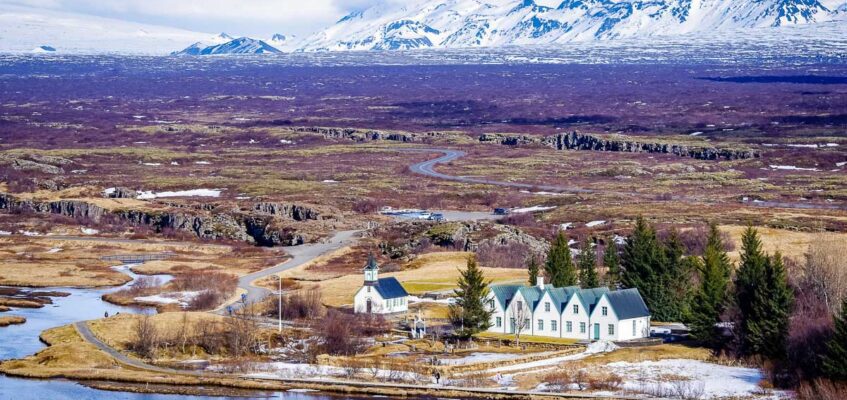






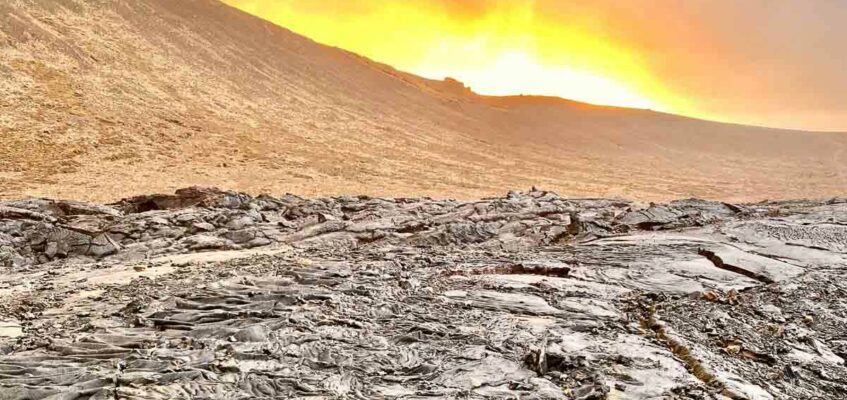


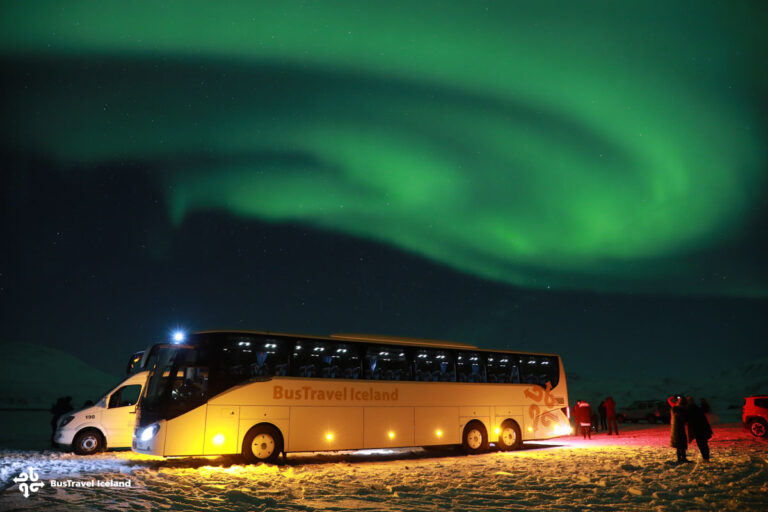
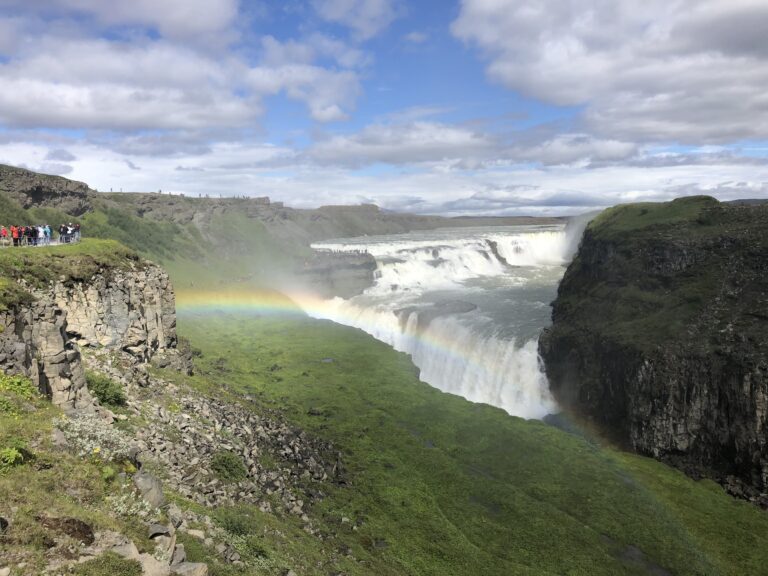
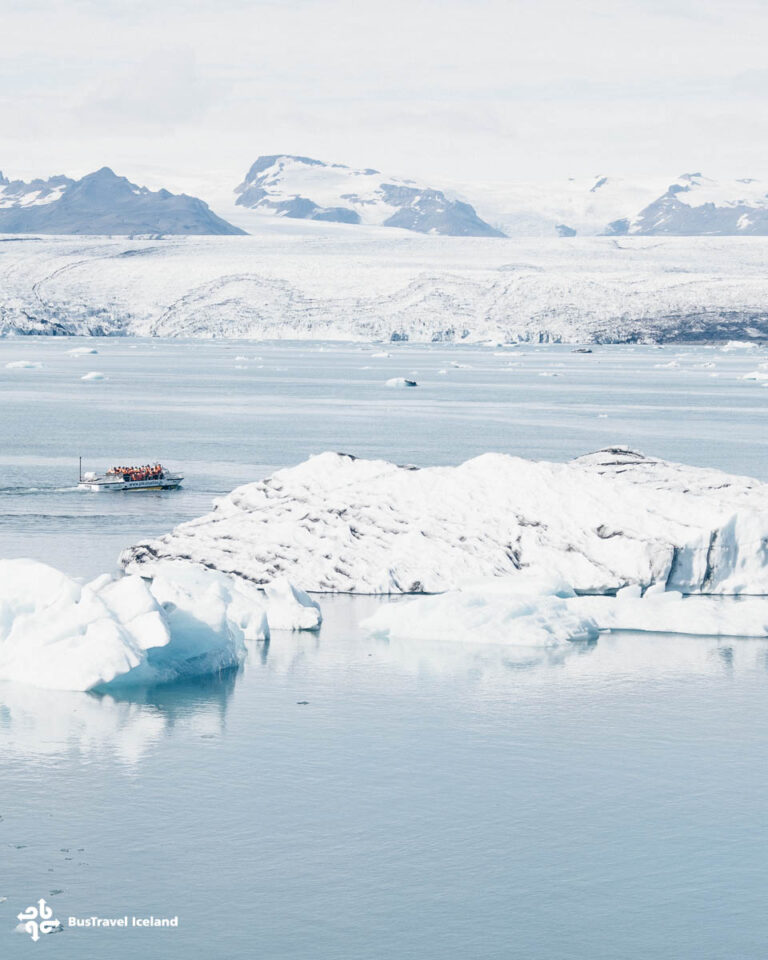
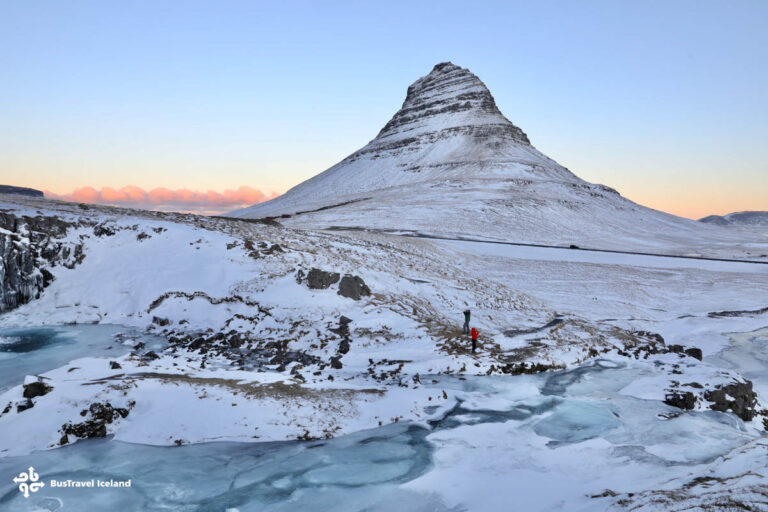
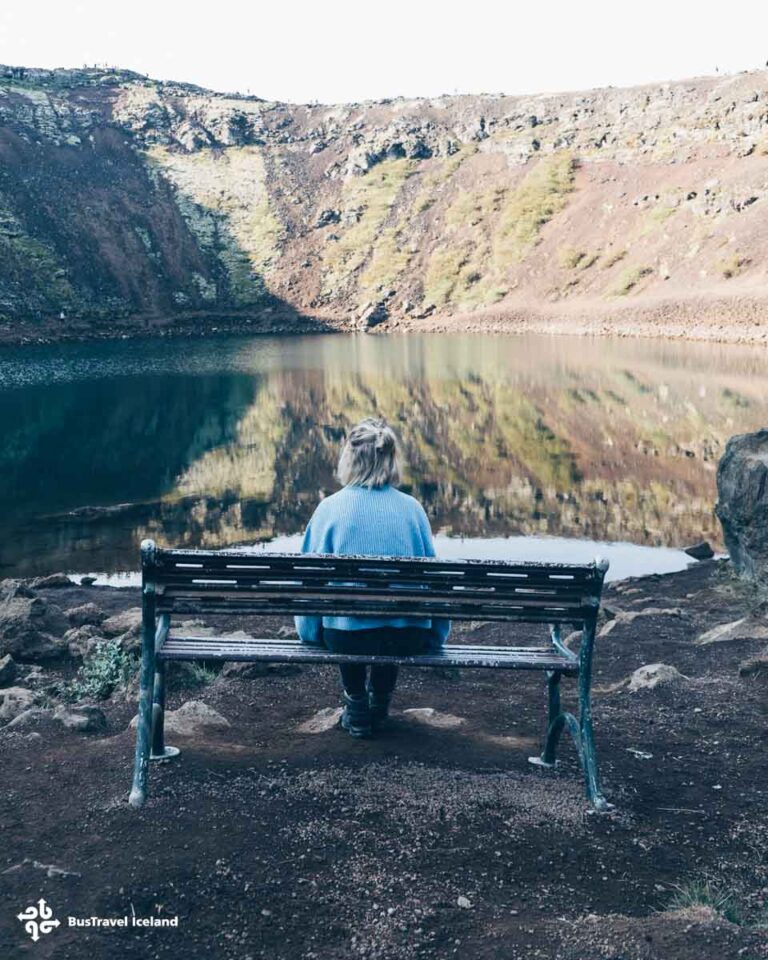
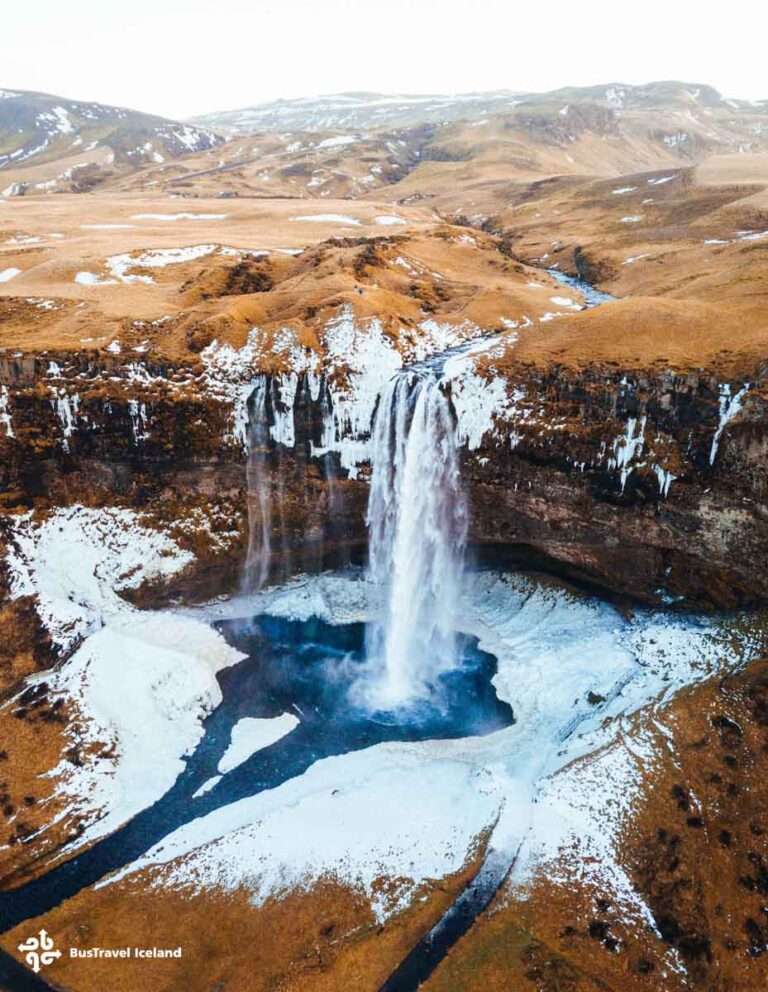
![Reykjavik downtown view from Hallgrimskirkja church tower Winter scene of downtown Reykjavik. [Photo credit to Yanshu Li]](https://bustravel.is/wp-content/uploads/2020/12/Reykjavik-downtown-view-from-Hallgrimskirkja-church-tower-1200x645.jpg)












